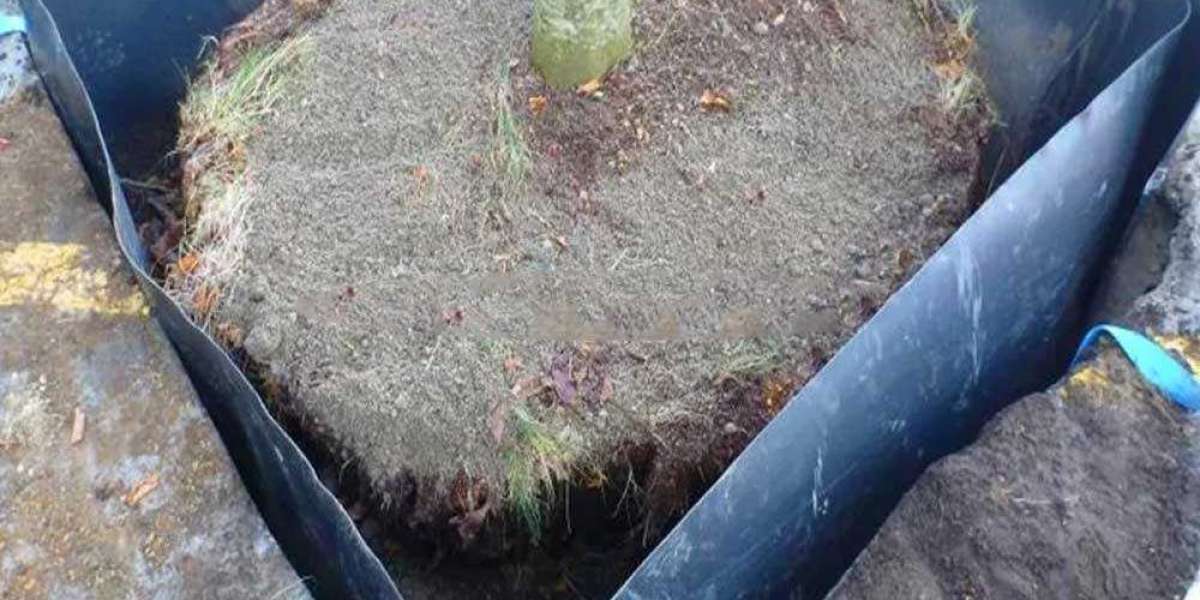Ever dream of a thriving landscape without worrying about rogue roots wreaking havoc on your sidewalks, foundation, or prized flowerbeds? Enter the hero – the HDPE Root barrier hdpe. This unsung champion might not be as flashy as a blooming flower, but its role in maintaining a healthy and safe environment for both your plants and your property is undeniable.
What is an HDPE Root Barrier?
Made from high-density polyethylene (HDPE), a robust and durable plastic, an HDPE Root barrier price is essentially a sheet designed to redirect root growth. Installed vertically in the ground, it acts as a physical barrier that roots cannot penetrate. This gentle nudge encourages roots to grow in a designated direction, preventing them from invading unwanted areas.
Why Use an HDPE Root Barrier?
While trees and other plants add undeniable beauty to a property, their extensive root systems can sometimes become a nuisance. Here's how an HDPE root barrier can be your landscape's silent guardian:
Protecting Infrastructure:
Tree roots, especially those of fast-growing varieties, can wreak havoc on sidewalks, driveways, patios, and even building foundations. By creating a barrier, HDPE root barriers prevent roots from cracking or lifting these surfaces, saving you from costly repairs.Preserving Underground Utilities:
Underground pipes for water, sewer, and electrical lines are vulnerable to root intrusion. HDPE root barriers shield these utilities, preventing damage, leaks, and costly disruptions.Safeguarding Neighboring Plants:
In garden beds, aggressive tree roots can dominate the space, depriving other plants of essential nutrients and water. HDPE root barriers confine tree roots to their designated area, ensuring a fair share of resources for all your plants.Maintaining Property Value:
A well-maintained landscape with protected infrastructure adds value to your property. By preventing root damage, HDPE root barriers contribute to the overall aesthetics and functionality of your outdoor space.
Benefits of Using HDPE Root Barriers
Beyond their primary function of root control, HDPE root barriers offer several additional advantages:
Durability:
HDPE is known for its exceptional strength and resistance to harsh environmental conditions. It can withstand extreme temperatures, chemicals, and physical stress for many years, making it a long-lasting investment.Cost-Effectiveness:
Compared to the potential cost of repairing root damage, HDPE root barriers are a relatively affordable solution. Their long lifespan and minimal maintenance requirements further enhance their cost-effectiveness.Environmentally Friendly:
HDPE is recyclable and does not leach harmful chemicals into the soil. Additionally, by preventing root damage and the need for harsh chemical treatments, it contributes to a more sustainable landscaping approach.Ease of Installation:
HDPE root barriers are lightweight and flexible, making them easy to install in various landscapes. They can be cut to fit specific shapes and dimensions, offering versatility for different applications.
Choosing the Right HDPE Root Barrier
With a variety of HDPE root barrier options available, selecting the right one for your needs is crucial. Here are some key factors to consider:
Thickness:
The thickness of the barrier determines its strength and root-repelling ability. Thicker barriers are ideal for larger, more aggressive trees, while thinner ones may suffice for smaller plants or flowerbeds.Depth:
The depth of the barrier should be sufficient to guide roots below the targeted area. Deeper barriers are recommended for mature trees or areas with extensive root systems.Overlaps:
Properly overlapping the barrier sections is essential to create a continuous and effective barrier. Ensure the overlap recommendations specified by the manufacturer are followed during installation.
Installing Your HDPE Root Barrier
While professional installation is always recommended for complex projects, installing an HDPE root barrier for smaller areas can be a DIY project. Here's a general overview of the process:
Plan and Excavate:
Plan the layout of the barrier and mark the trench location. Excavate a trench along the marked line to the desired depth.Prepare the Base:
Line the bottom of the trench with a weed control fabric to prevent unwanted weed growth.Install the Barrier:
Unroll the HDPE root barrier and carefully place it vertically in the trench. Ensure the overlaps are aligned according to the manufacturer's instructions.Secure the Barrier:
Secure the top edge of the barrier using appropriate stakes or a trench cap (depending on the product) to prevent it from shifting.Backfill the Trench:
Carefully backfill the trench with the excavated soil, ensuring the barrier remains upright and properly positioned.
Conclusion
HDPE Root barrier sheet are a valuable tool for anyone looking to manage root growth and protect their property. By understanding their benefits, choosing the right product, and following proper installation techniques, you can create a harmonious
Frequently Asked Questions (FAQs):
1. My dream landscape includes a beautiful tree, but I'm worried about root damage. Can Singhal Industries HDPE Root Barriers help?
Absolutely! Singhal Industries HDPE Root Barriers are designed to be your landscape's silent guardian. They act as a physical barrier, gently guiding tree roots to grow in a designated direction. This prevents them from invading unwanted areas like sidewalks, driveways, or even your foundation, protecting your property from costly repairs.
2. Are Singhal Industries HDPE Root Barriers difficult to install?
Singhal Industries HDPE Root Barriers are known for their ease of installation. They are lightweight and flexible, allowing for adjustments on-site. For smaller projects, a DIY approach can be successful. However, for complex landscapes or deep root systems, professional installation is always recommended.
3. What factors should I consider when choosing a Singhal Industries HDPE Root Barrier?
Singhal Industries offers a variety of HDPE Root Barrier options to cater to different needs. The thickness of the barrier determines its strength, with thicker options ideal for larger trees. The depth ensures proper root control, and proper overlap recommendations by Singhal Industries are crucial for a continuous barrier. Their knowledgeable team can help you choose the perfect barrier for your specific project.







